Who is the blogger?
Video Trailer Collection
Picks from movies shown on TVOntario's Saturday Night at the Movies
Entries in 1940s films (12)
It's a Wonderful Life (1946)
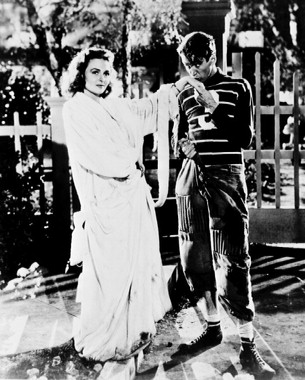 “It’s a Wonderful Life” is the kind of film everyone loves to see (and see again) no matter what time of year it is. It seems like the more things change, the more a film like this stays the same. It provides a kind of film-watchers’ comfort food as we hurtle at breakneck speed through the ensuing decades of personal, societal, and cinematic evolution. Perhaps some of us are not so sure anymore of why exactly we like this movie, how the tradition of watching it got started or if the film is really all that good in the first place. We know that it’s a
“It’s a Wonderful Life” is the kind of film everyone loves to see (and see again) no matter what time of year it is. It seems like the more things change, the more a film like this stays the same. It provides a kind of film-watchers’ comfort food as we hurtle at breakneck speed through the ensuing decades of personal, societal, and cinematic evolution. Perhaps some of us are not so sure anymore of why exactly we like this movie, how the tradition of watching it got started or if the film is really all that good in the first place. We know that it’s a 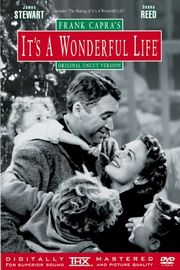 part of a well-worn tradition (like eating fruitcake and turkey giblet gravy at Christmas). For that reason, if for no other, we are bound to see it again some time.
part of a well-worn tradition (like eating fruitcake and turkey giblet gravy at Christmas). For that reason, if for no other, we are bound to see it again some time.
There’s just something terribly likeable about that everyman character, George Bailey (played by Jimmy Stewart). It’s not that he’s all that good looking or extremely clever or exceptionally charming or anything else. He’s just supposed to be an ordinary “nice guy”. In this big old mean old world, even nice guys can have some pretty big problems. At a certain point, George’s charmed life comes crashing in upon him and he finds  himself about to jump off a bridge to put an end to it all. George Bailey wonders out loud if his life has really been worth living. A guardian angel (played by Henry Travers) is immediately dispatched from the heavenly realms in order to put things to rights. With the help of the unearthly messenger, George comes to realize that his life has had a tremendous impact, not only on his immediate family members, but on the whole community.
himself about to jump off a bridge to put an end to it all. George Bailey wonders out loud if his life has really been worth living. A guardian angel (played by Henry Travers) is immediately dispatched from the heavenly realms in order to put things to rights. With the help of the unearthly messenger, George comes to realize that his life has had a tremendous impact, not only on his immediate family members, but on the whole community.
 Wholesome is a good word to describe this film. It’s not a type of picture that you would see made today. Maudlin might be another word employed by some detractors of the film who would have little patience for such a cinematic work. But then, such people might not really appreciate how things work and what exactly goes on around the family dinner table each Christmas at our house. There are just certain dishes that Mother makes for every Christmas dinner (like the orange
Wholesome is a good word to describe this film. It’s not a type of picture that you would see made today. Maudlin might be another word employed by some detractors of the film who would have little patience for such a cinematic work. But then, such people might not really appreciate how things work and what exactly goes on around the family dinner table each Christmas at our house. There are just certain dishes that Mother makes for every Christmas dinner (like the orange 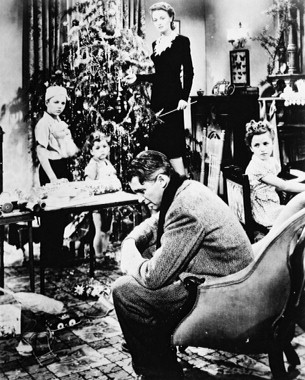 jellied salad or the buttered spicy squash). If you come as a guest for the dinner every year, you know that you are going to have to eat those dishes. It does no good to complain. You might as be reconciled with the traditional menu offering and find the virtues of the said salad. You’ll enjoy things a lot more if you do. And after all, what’s so bad about being good? Milk is wholesome too. It can be quite pleasant if you are used to it. And you would probably miss it if you could
jellied salad or the buttered spicy squash). If you come as a guest for the dinner every year, you know that you are going to have to eat those dishes. It does no good to complain. You might as be reconciled with the traditional menu offering and find the virtues of the said salad. You’ll enjoy things a lot more if you do. And after all, what’s so bad about being good? Milk is wholesome too. It can be quite pleasant if you are used to it. And you would probably miss it if you could 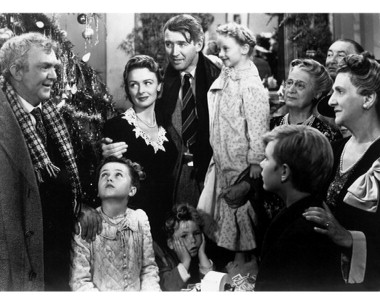 no longer have it. That’s kind of how I feel about “It’s a Wonderful Life”.
no longer have it. That’s kind of how I feel about “It’s a Wonderful Life”.
>>Not so Real Life: Sarah takes a chance on striking out in a new direction. Dealing with disappointments
>>More to see: Looking for more out of life?
See the three minute summary of "It's a Wonderful Life" (1946) Also see the scene where George lassos the moon.
The Lady From Shanghai (1947)
 “The Lady from Shanghai” (1947) stars Rita Hayworth as Elsa Bannister and Orson Welles as Micahel O’Hara. Welles does it all as principle actor, writer and director of the movie. It is an interesting film from more than one angle (à la crazy fun
“The Lady from Shanghai” (1947) stars Rita Hayworth as Elsa Bannister and Orson Welles as Micahel O’Hara. Welles does it all as principle actor, writer and director of the movie. It is an interesting film from more than one angle (à la crazy fun  house mirrors of the climax scene). Hayworth and Welles were in the final phases of their off-screen relationship at the time of filming, Welles reported that he did the film simply as a way of financing other projects in jeopardy, and the complicated plot of the original Sherwood King novel is just, well, hard to follow. But then, Michael O’Hara’s Irish brogue is rather hard to follow and even harder to swallow at times.
house mirrors of the climax scene). Hayworth and Welles were in the final phases of their off-screen relationship at the time of filming, Welles reported that he did the film simply as a way of financing other projects in jeopardy, and the complicated plot of the original Sherwood King novel is just, well, hard to follow. But then, Michael O’Hara’s Irish brogue is rather hard to follow and even harder to swallow at times.
 Rita Hayworth’s character is the rather too obvious femme fatale who spices up the exotic scenery and even indulges us with a musical number and a spectacular cliff diving scene for the benefit of box office sales. It’s film noir with more than the usual twist at the end with a visually discombobulating fun house scene that is all “Orson”. It can be fun, if you just relax and get into the
Rita Hayworth’s character is the rather too obvious femme fatale who spices up the exotic scenery and even indulges us with a musical number and a spectacular cliff diving scene for the benefit of box office sales. It’s film noir with more than the usual twist at the end with a visually discombobulating fun house scene that is all “Orson”. It can be fun, if you just relax and get into the 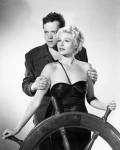 genre and the period of Hollywood film making.
genre and the period of Hollywood film making.
>>More to see: Looking for more out of life?
>>Real Life Story: Katie and Nathan realized that they were driving each other into someone else’s arms. See the real life turnaround in their marriage.
Orson Welles as Michael O’Hara gives us his rendition of the poetic Irish soul in this famous “shark scene on video clip. See below a re-cut, remixed video trailer for “The Lady From Shanghai” (1947)
The Philadelphia Story (1940)
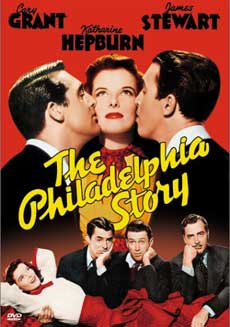 "Philadelphia Story" (1940) IMDb stars Katharine Hepburn whose ex, played by Cary Grant, complicates her present wedding plans enormously,
"Philadelphia Story" (1940) IMDb stars Katharine Hepburn whose ex, played by Cary Grant, complicates her present wedding plans enormously, 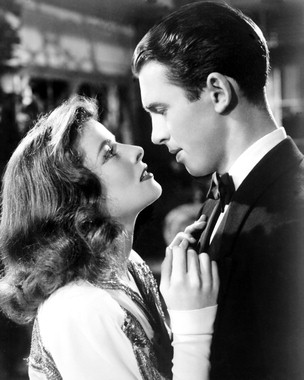 as recorded by a tabloid reporter, James Stewart. The star-studded cast goes down in film history in this classic romantic comedy. The broadway hit, which also starred Ms. Hepburn in the lead female role, was recycled into a highly successful film adaptation thanks to great casting and wonderful dialogue. Tracy Lord (Katharine Hepburn) takes us all on a roller coaster ride leading up to the big day of her society wedding accompanied by a great assortment of annoying relatives, expensive wedding gifts, a
as recorded by a tabloid reporter, James Stewart. The star-studded cast goes down in film history in this classic romantic comedy. The broadway hit, which also starred Ms. Hepburn in the lead female role, was recycled into a highly successful film adaptation thanks to great casting and wonderful dialogue. Tracy Lord (Katharine Hepburn) takes us all on a roller coaster ride leading up to the big day of her society wedding accompanied by a great assortment of annoying relatives, expensive wedding gifts, a  knock-out wardrobe, interfering members of the press and a bothersome ex-husband or two hanging around in the wings. Cary Grant is perfectly understated until just the right moment as C.K. Dexter Haven (I just can't resist letting that lovely name just roll off the
knock-out wardrobe, interfering members of the press and a bothersome ex-husband or two hanging around in the wings. Cary Grant is perfectly understated until just the right moment as C.K. Dexter Haven (I just can't resist letting that lovely name just roll off the 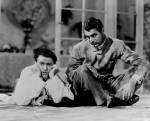 tongue). Plans come more than slightly unraveled as a result of prying eyes, a drink or two too many and general foolishness and pride. But, all's well that ends well. Everyone, including the audience, is most content with the state of matrimonial bliss by the film's finish.
tongue). Plans come more than slightly unraveled as a result of prying eyes, a drink or two too many and general foolishness and pride. But, all's well that ends well. Everyone, including the audience, is most content with the state of matrimonial bliss by the film's finish.
<<Back to Midnight Oil main journal
>>On to "Who's Directing Your Life?"
Catch the video clip for "Philadelphia Story" (1940) here.
The More the Merrier (1943)
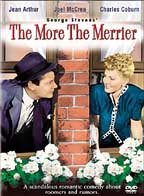 “The More the Merrier”(1943) IMDb starring Jean Arthur, Joel McCrea and Charles Coburn is indeed a merry little tale set in war-time Washington. A severe housing shortage in the city serves as the pretext for throwing together the unlikely trio. The well put together Miss Constance Milligan finds herself discombobulated by her two new housemates in more ways than one. Chaos ensues that ends with
“The More the Merrier”(1943) IMDb starring Jean Arthur, Joel McCrea and Charles Coburn is indeed a merry little tale set in war-time Washington. A severe housing shortage in the city serves as the pretext for throwing together the unlikely trio. The well put together Miss Constance Milligan finds herself discombobulated by her two new housemates in more ways than one. Chaos ensues that ends with 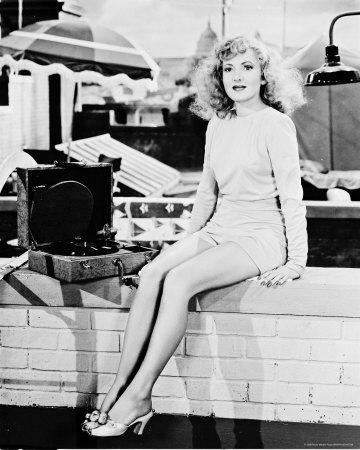 a complete reconfiguration of living arrangements and relationship status. As they say, “All’s well that ends well.” The mores of the times on display in this romantic comedy might be considered quaint these days. However, once you are ready to entertain the pretense of the whole scenario, there really are some funny bits to be enjoyed.
a complete reconfiguration of living arrangements and relationship status. As they say, “All’s well that ends well.” The mores of the times on display in this romantic comedy might be considered quaint these days. However, once you are ready to entertain the pretense of the whole scenario, there really are some funny bits to be enjoyed.
<<Back to Midnight Oil main journal
>>On to "Who's Directing Your Life?"
Catch a video excerpt of the "front steps" scene from "The More the Merrier" (1943)
Christmas in Connecticut (1945)
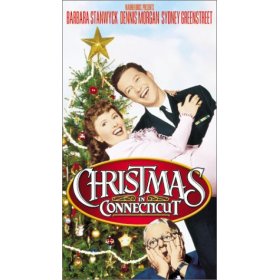 This Christmas on TVO's SNAM, Barbara Stanwyck and Dennis Morgan whip up some silly and frothy holiday fare that's just right for those of us who are in the mood for some seasonal schmaltz.
This Christmas on TVO's SNAM, Barbara Stanwyck and Dennis Morgan whip up some silly and frothy holiday fare that's just right for those of us who are in the mood for some seasonal schmaltz.
It’s really easy at Christmas time to enter into some kind of a weird headspace that’s chock-full of ooey gooey sentimentality and high calorie nostalgia. We should all know better by now than to indulge, but for some reason, because it’s the holiday season, we just let ourselves go and run hog wild with the schmaltz and the schlock.
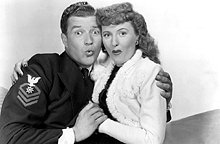 For me, a movie like "Christmas in Connecticut" fits in there somewhere in that weird headspace.
For me, a movie like "Christmas in Connecticut" fits in there somewhere in that weird headspace.
Read the rest of the Hunky Dunky Holiday archived entry for the review of "Christmas in Connecticut" on the Midnight Oil journal.
See also the Barbara Stanwyck classic "The Lady Eve" on the Midnight Oil Video Journal.
<<Back to Midnight Oil main journal
>>On to "Who's Directing Your Life?"
Catch the TVO video preview for "Christmas in Connecticut".





